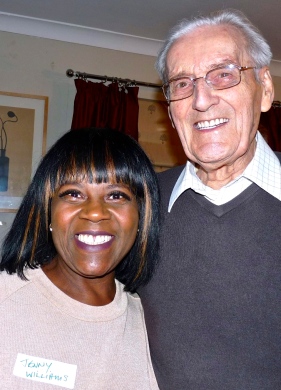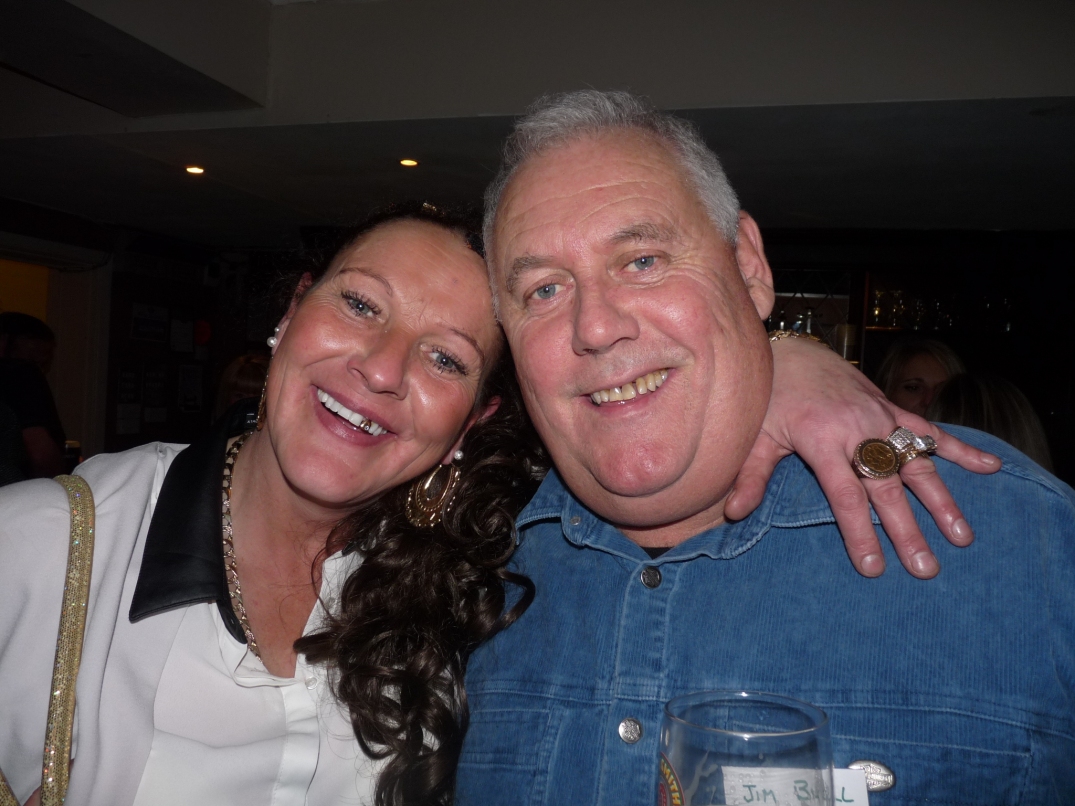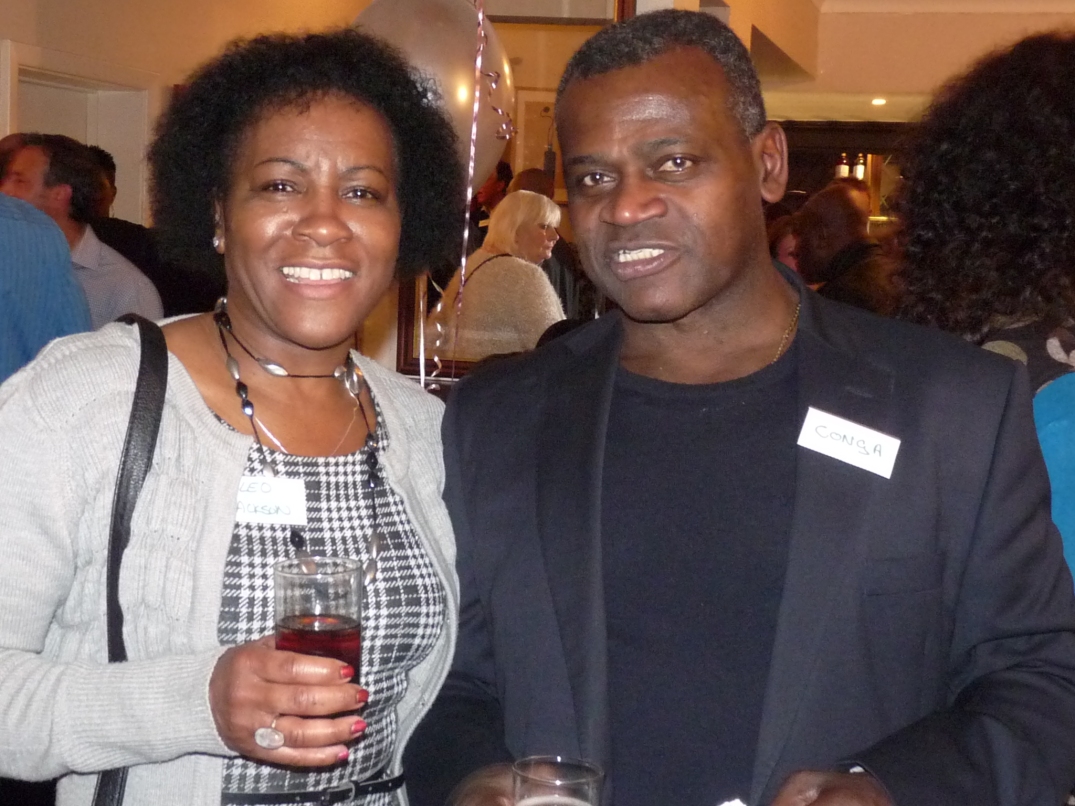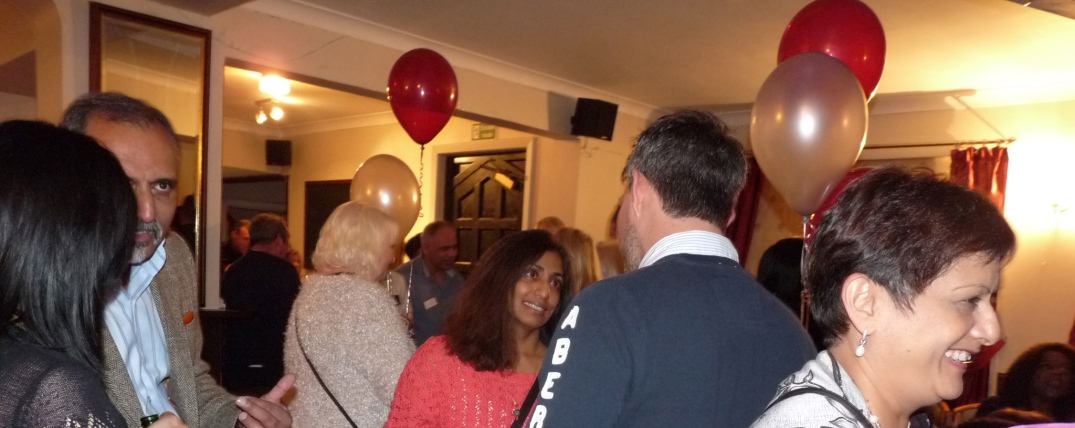

I went to my school’s reunion. It was open to any pupil or teacher from any year and held at the Juniper Berry, an historical pub in the centre of Southampton. The Deanery School was the first multi-culltural school in the South outside London. There are no Sotonians that I know living in my neighbourhood. In fact, I rarely hear people even speak in English during the long summers until some 42,000 students arrive for their autumn term. So it was wonderful to meet up with so many diverse races of people not only speaking my language but with Southampton accents and local slang. Ages ranged from 40 to 80 years of age. We conversed all evening about our school traditions what people are doing now and those that have passed away.

Whole families came to the reunion. Each had attend the school throughout their generation. Because it was small and because we all joined in out-of-school activities we were familiar with each other. Many married their childhood sweet-hearts.
The Deanery concentrated on the Individual, it honed in on our abilities and seemed to bring out the best of each one us, regardless of intelligence or ability to pass exams. The invisible curriculum was just as important to us as the main one. Many ex-pupils run their own businesses or work for companies that take them all over the world, particularly at sea – with so many stories from other countries it must have given us an appetite to travel.



The Deanery School, 1930 -1989
Continue below for the history of the rise and fall of The Deanery School….
The Deanery was a mixed-sex secondary school for the central community; ages 11-16 taught over 5 years. Pupils could leave school at the age of 15 when I attended, but changed to the age of 16 with an option of going on to a Further Education College until the age of 18.
It was the first multi-cultural school in the South outside of London. Southampton, being a port city, has always had variety of diverse communities, all of which are valued and respected, as I have explained in previous posts.
When I attended, white English people were in a minority at the school. In my year, there were a great many Hindus Muslims, some Buddhists and a few Jewish, although the majority were Christian. The biggest cultural group of people were first to third generation Indian, not only from India but from what is now Pakistan, and other parts of Asia including places like Fiji and from Africa (North and South). In my year we also had first to third generations of Polish, Spanish, Italian, Irish, Chinese (from Vietnam and Hong Kong), West Indies: Jamaica, Barbados (white and black), Virgin Islands, Dutch, Cypriots (Turkish and Greek), Hungarians and Maltese. Nearly all could speak English before they started at the school.
Multi-cultural schools are quite normal in cities now, throughout Europe. But at that time they were rare and my school was a great fascination for others, especially for the media, politicians, sociologists and those with ‘melting pot’ theories. We filled out endless surveys and felt as though we were being watched. We had a strict school uniform that included options for turbans and loose leggings (to wear underneath a skirt). There were no hats or other items that covered the head or face as these were rarely seen in the community then and certainly not on children. In the Summer boys could wear shorts (but none did; they weren’t cool) and girls could wear any attire so long as it was red and white and modest.
As the number of educational subject increased, The Deanery expanded to many other sites spread out over central Southampton. The main site was Marsh Lane, next to St Mary’s Church, and was originally built to educate children from the workhouse. It is now a block of flats. As the community grew, the school expanded to the other half of the building that housed Southampton College of Art until 1970 when the art department moved to a new building in East Park (now part of Solent University). The school also took over The Central Boys School building in Argyle Road, Nicholstown, mainly for teaching the 4th and 5th years. Nissan huts were added to the playgrounds. I lived nearer to this site (which is now a Hindu temple). It had a separate dinner hall about a 10 minute walk away in Covelly Road, where, unlike the food at Marsh Lane, lunch time meals were cooked on the premises. Due to the many different religious beliefs regarding meat, there was a lovely choice on the menu. That was rare in England in my day. The meals were some of the best I had ever tried. In the evenings this hall operated as The Boys Club. Opened by famous crooner Frankie Vaughn, who had been an Italian immigrant. He supported boys clubs, which opened up all over England and Wales, to keep boys off the streets and away from gangs.
Another site was Latimer Street off Oxford Street (Now trendy apartments and restaurants). This is where all the domestic science and needlework took place. In my day this was only for girls, while boys did wood and metal work. Many subjects were segregated until the late 1970s. I had my first and only ever fight in the corridor here. My head was thrown against a row of coat pegs by the school bully. It was generally a peaceful school, so this caused an outrage. There was blood everywhere, I’ll never forget it.
There was also Site 4, which was an inner-city farm. Though I never went there and Cross House Hard where I learned not only sailing skills, but how to repair boats and sails.The school had its own launch on the river. We also used the Council swimming pool (now the Grand Harbour Hotel) at the Town Quay, the sports centre north of the town, the cricket pitches in Hoglands Park and The Common for all sorts of sports activities.
It was normal to walk through the city for 2-3 miles between lessons. As traffic increased it became more dangerous. Later the school could not match the range of subjects that the new comprehensive schools could. The Deanery School was forced to close in 1989.

You must be logged in to post a comment.